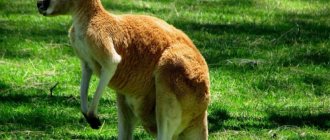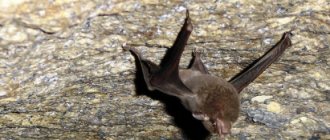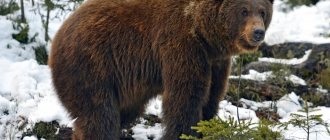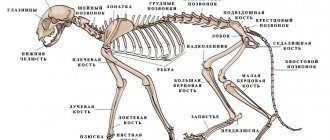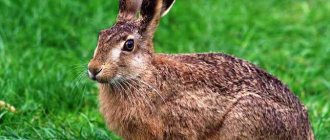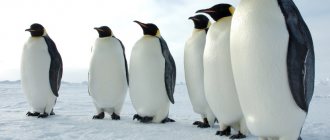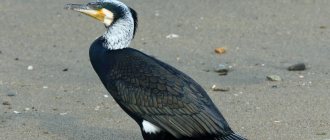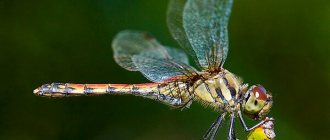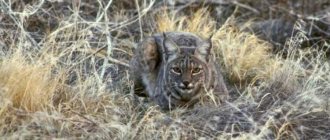- Kangaroo: description, structure, characteristics. What does a kangaroo look like?
Kangaroos are amazing and unique representatives of the animal world of our planet, a kind of calling card of Australia. Previously unknown to Europeans, these animals were discovered only with the discovery of Australia itself by the Dutch navigator Willem Janszoon in 1606. And from the first meeting, kangaroos (as well as other unique representatives of the Australian fauna) captured the imagination of Europeans, who had never met such unique animals anywhere before. Even the origin of the very name of these creatures – “kangaroo” – is very curious.
Etymology of the word "kangaroo"
It is believed that the name “kangaroo” came to us from the language of the Australian aborigines, but there are several versions on this matter. According to one of them, when the team of the English navigator James Cook went deep into the Australian
continent and met a kangaroo, the British asked the local aborigines what these strange creatures were, to which the answer was “kangaroo”, which in their language meant “keng” - jumping “uru” - four-legged.
According to another version, “kangaroo” in the native language simply meant “I don’t understand.” According to the third, the natives simply repeated after the British the phrase “can you tell me” (can you tell me), which in their performance was transformed into “kangaroo”.
Be that as it may, linguists have established that the word “kangaroo” first appeared in the language of the Australian tribe Guugu-Yimithirr, as the aborigines called black and gray kangaroos, and literally it meant “big jumper”. And after the British met them, the name kangaroo spread to all Australian kangaroos.
Structure of a kangaroo
Like all kangaroos, the tail is especially important for giant kangaroos. It maintains balance, supports itself while sitting and fighting with other kangaroos: when such a kangaroo kicks, it can support itself with its tail, like a third leg, without falling.
The tail is used not only for balance and momentum when jumping, but also as a full-fledged leg on which marsupials support themselves when walking slowly.
Description, structure, characteristics
Kangaroos are mammals that belong to the order Two-incisor marsupials and the family Kangarooidae. Their close relatives are also kangaroo rats or potoroos, which may be discussed in a separate article on our website.
The kangaroo family includes 11 genera and 62 species, including rare and endangered ones. Small species of kangaroo are also sometimes called wallaroos or wallabies. The largest eastern gray kangaroo is 3 meters long and weighs 85 kg. While the smallest of the kangaroo family are philanders, striped wallabies and short-tailed kangaroos reach only 29-63 cm and weigh 3-7 kg. Moreover, the tail of these animals can be an additional 27-51 cm.
Interestingly, male kangaroos are many times larger than females, whose growth stops after puberty, while males continue to grow. It is not uncommon for a female gray or red kangaroo, who is participating in reproduction for the first time, to be courted by a male 5 or even 6 times larger than her.
Surely everyone has seen what large kangaroos look like: they have a small head, but with large ears and no less large almond-shaped eyes. Kangaroos' eyes have eyelashes that protect their corneas from dust. The kangaroo's nose is black.
The lower jaw of a kangaroo has an unusual structure; its rear ends are curved inward. How many teeth does a kangaroo have? Depending on the species, the number of teeth ranges from 32 to 34. Moreover, kangaroo teeth are devoid of roots and are perfectly adapted for rough plant food.
The front legs of a kangaroo seem to be not fully developed, but the hind legs are very strong, it is thanks to them that the kangaroo makes its signature jumps. But the thick and long tail of a kangaroo is not just for beauty; thanks to it, these creatures balance when jumping, and it also serves as a support when sitting and fighting. The length of a kangaroo's tail, depending on the species, can be from 14 to 107 cm.
When resting or moving, the animal's body weight is distributed over its long narrow feet, creating the effect of plantigrade walking. But when kangaroos jump, they use only two toes on each foot - the 4th and 5th. And the 2nd and 3rd fingers are one process with two claws; kangaroos use them to clean their fur. The first toe of their foot, alas, is completely lost.
The small front paws of a kangaroo have five movable toes on a wide and short hand. At the ends of these fingers there are sharp claws that serve kangaroos for a variety of purposes: with them they take food, scratch fur, grab enemies in self-defense, dig holes, etc. And large species of kangaroos also use their front paws for thermoregulation , licking them from the inside, after which saliva
evaporates, and thus cools the blood in the network of superficial vessels.
Large kangaroos move by jumping using their strong hind legs, but jumping is not the only way these animals move. In addition to jumping, kangaroos can also walk slowly using all four limbs, which move in pairs rather than alternately. How fast can kangaroos reach? Using jumps, large kangaroos can easily move at a speed of 40-60 km per hour, while making jumps 10-12 m long. At this speed, they not only escape from enemies, but sometimes jump over three-meter fences and even Australian highways. True, since such a jumping method of movement for kangaroos is very energy-consuming, after 10 minutes of such running and jumping they begin to get tired and, as a result, slow down.
Interesting fact: kangaroos are not only excellent runners and sprinters, but also good swimmers; in the water they also often escape from enemies.
When resting, they sit on their hind legs. The body is held vertically and supported by the tail. Or they lie on their side, leaning on their forelimbs.
All kangaroos have soft, thick, but short fur. Kangaroos have fur of different shades of yellow, brown, gray or red. Some species have dark or light stripes on the lower back, in the shoulder area, behind or between the eyes. Moreover, the tail and limbs are usually darker than the body, and the belly, on the contrary, is lighter. Rock and tree kangaroos sometimes have longitudinal or transverse stripes on their tails. And in some species of kangaroos, males are brighter colored than females, but this sexual dimorphism is not absolute.
Albino kangaroos are very rarely found in nature.
The females of all kangaroos have signature pouches on their bellies in which they carry their young - this is one of the most striking and unique features of these animals. At the top of the kangaroo's pouch there are muscles with which the mother kangaroo can tightly close the pouch when necessary, for example during swimming, so that the little kangaroo does not suffocate.
Kangaroos also have a sound apparatus with which they can make different sounds: hiss, cough, grunt.
How do kangaroos jump?
The kangaroo animal jumps at a speed of 15 kilometers per hour. Only then do they require less energy to jump than for quadrupeds to jump. Once the kangaroo jumps, it can jump further and faster.
Using the energy-saving kangaroo spring trick, every time you land, energy is collected in the tendons of your flexed back legs and released again the next time you push off like a spring.
Kangaroos originally used jumping to scare enemies with a quick attack. Rat kangaroos and other small kangaroos still do this today: they sit in their shelters and jump when there is danger.
Over millions of years, the animals adapted to their new habitat on land: their front legs were shortened to become grasping arms, and their hind legs were long and stable, until kangaroos could only jump rather than run.
Ideal for quickly negotiating ever-increasing paths between ponds and pastures! Because on two legs, kangaroos can jump up to 300 kilometers at a time - and not even get out of breath.
Now scientists are trying to uncover the secrets of kangaroo jumping. For example, they copy the structure of the hind legs when they build prosthetics for people without lower legs.
Carbon fiber artificial legs spring back like kangaroo tendons, and thus make amazing things possible: sprinters compete on these replacement legs in the Olympic Games for the disabled - and run almost as fast as record holders with real legs.
However: even the kangaroo movement has one drawback. It's true that they jump higher, faster and further than most other mammals. But running backwards is something the miracle jumpers will have a hard time coping with.
Nutrition
All kangaroos are herbivores, although there are several omnivorous species among them. For example, tree kangaroos can eat bird eggs and small chicks themselves, cereals and tree bark. Large red kangaroos feed on Australian thorny grass, short-faced kangaroos eat the roots of some plants and some types of mushrooms, at the same time playing an important role in the spread of spores of these same fungi. Small species of kangaroos like to eat grass as food,
leaves, seeds. At the same time, they are more picky in their diet than their larger counterparts - they can spend hours looking for suitable grass, when any vegetation is suitable for undemanding large kangaroos.
It is interesting that kangaroos are not very picky about water, so they can easily do without it for up to a month, being content with moisture from plants and dew.
In zoos, kangaroos are fed grasses, and the basis of their diet in captivity is rolled oats mixed with seeds, nuts and dried fruits. They also enjoy eating various fruits and corn.
Kangaroo diet
What does a kangaroo eat? These are herbs, leaves, seeds, fruits, tubers, onions and even noble mushrooms such as truffles. There are beetle larvae on the menu. Like cattle, they can choke and have difficulty digesting food.
Habitats
Of course, in Australia you say, and of course you will be right. But not only there, in addition to it, kangaroos can be found in neighboring New Zealand, and some nearby islands: New Guinea, Tasmania, Hawaii and the island of Kawau and some other islands.
Also, kangaroos choose different climatic zones as habitats, from the deserts of central Australia to the moist eucalyptus forests on the outskirts of this continent. Among them we can distinguish tree kangaroos, the only representatives of this family that live in trees; they naturally live exclusively in forests, while, for example, hare and claw-tailed kangaroos, on the contrary, prefer desert and semi-desert areas.
Where does the kangaroo live?
Their habitats, as a rule, are the arid territories of the planet - these animals inhabit Australia, New Guinea, are found on the Bismarck Islands, Tasmania, and are found in England and Germany.
Kangaroos have adapted to live even in cold climates - they also live in countries where snowdrifts in winter sometimes reach their waists.
Wild Lifestyle
The tree kangaroos we mentioned in the last paragraph are closest to the common ancestors of all kangaroos, which in the old days lived in trees, after which, in the process of evolution, all types of kangaroos, with the exception of tree kangaroos, descended to the ground.
The lifestyle of kangaroos differs depending on the species, so small kangaroos lead a solitary lifestyle, with the exception of females with children, who start a family, but only until the small kangaroos grow up. Males and females of these kangaroos unite only during the mating season to procreate, then scatter again and live and feed separately. During the day they usually lie in secluded places, waiting out the heat of the day, and in the evening or at night they go out in search of food.
But large species of kangaroos, on the contrary, are herd animals, sometimes forming large herds of 50-60 individuals. However, membership in such a herd is free and animals can easily leave it and join again. It is curious that individuals of a certain age tend to live together, but it also happens the other way around, for example, a female kangaroo, whose baby is preparing to leave the pouch, avoids other kangaroo mothers who are in exactly the same position.
Living in a large herd, it is easier for large kangaroos to resist potential predators, primarily wild dingoes and the marsupial that once lived in Australia
wolf (now extinct).
Where does it live?
The ancestors of modern kangaroos and other marsupials in the Mesozoic era were distributed on almost all continents. Subsequently, they were replaced by other subclasses of mammals and survived only in Australia due to its geographic isolation. The results of excavations and research indicate that the historical homeland of the kangaroo is South America.
Currently, the habitat also extends to the islands of Tasmania and New Guinea. There are also kangaroos in the Bismarck Archipelago. After its introduction, the animal successfully adapted to New Zealand.
Where live
The kangaroo's natural habitat is plains with tall grass, thickets of bushes and sparse trees, which provide shelter on hot days.
Ringtail
There are about 15 species in the kangaroo family that have adapted to life in rocky regions. Rock wallabies (or rock kangaroos) are distinguished by their relatively medium size and dark shades of fur. During the daytime, they hide in caves and crevices, and in the evening they descend into the valleys in search of food.
Goodfellow's tree kangaroo
Another family unites species that have adapted to live in trees. The genus of tree kangaroos has 10 species inhabiting the tropical forests of Australia and nearby islands.
PLATYPUS
Enemies in nature
Since ancient times, the natural enemies of kangaroos have been Australian predators: the wild dog dingo, the marsupial wolf, various birds of prey (they hunt only small kangaroos or small cubs of large kangaroos), and large snakes. Although the large kangaroos themselves are capable of standing up for themselves quite well - the impact force of their hind legs is enormous, there have been cases when people fell with a broken skull from their blow (yes, these cute herbivorous kangaroos can be dangerous to humans). Dogs well aware of this danger, dingoes hunt kangaroos exclusively in packs, in order to avoid the deadly blows of the kangaroo paws, dingoes have their own technique - they specially drive the kangaroo into the water, trying to drown it.
But perhaps the most ferocious enemies of these animals are neither wild dingoes nor birds of prey, but ordinary midges, appearing in huge numbers after rains and mercilessly stinging kangaroos in the eyes, so that they sometimes even lose their sight for a while. Sandy
flea worms also plague our Australian jumpers.
Kangaroo lifestyle
Kangaroos jump, wrestle, scratch and bite each other. They can even kill an opponent with their hind legs, they are so strong. Male kangaroos have very muscular shoulders and long front legs. And a real “belly shield”: the skin is twice as thick and softens blows.
Adult male kangaroos fight for their place in the hierarchy of boxing matches. Usually the oldest animal is dominant. Males lower in the hierarchy can only reproduce if the pack leader briefly ignores them.
When the marsupial feels threatened, it hits the enemy with its hind legs. If this does not work, the animal does not shy away from luring the enemy into the water, pushing him and drowning him. And yet they look so cute.
Kangaroo and man
Under good conditions, kangaroos multiply very quickly, which worries Australian farmers, as they have a nasty habit of destroying their crops. Therefore, in Australia, a controlled shooting of large kangaroos is carried out annually in order to protect the crops of Australian farmers from them. It is interesting that at the beginning of the last century the population of large kangaroos was smaller than it is now, and the growth of their numbers in Australia was facilitated by a decrease in the number of their natural enemies - dingoes.
But the uncontrolled destruction of some other species of kangaroos, especially tree kangaroos, has brought a number of their species to the brink of extinction. Also, many small Australian kangaroos suffered from
foxes brought to Australia by Europeans at the end of the 19th century for sport hunting. The foxes, finding themselves on a new continent, quickly realized that they could hunt not only the same rabbits imported from Europe, but also local small kangaroos.
Lifestyle
Most kangaroo species are nocturnal. The animals go out to graze at dusk, and when they are full, they return to the center of their territory and rest in the shade of the trees. Females tend to graze longer and choose foods that contain more nutrients.
Kangaroos are considered herd animals. They form groups, the number of which can reach 100 individuals. However, unlike other social mammals, animals living in the same herd do not unite for protection from enemies and do not jointly protect their habitat.
Each herd consists of several groups: females with cubs, young sexually mature males, adults past reproductive age.
Types, photos and names
As we wrote above, there are as many as 62 species of kangaroos, and below we will describe the most interesting of them.
Big red kangaroo
This is the largest representative of the kangaroo family and at the same time the largest marsupial in the world. Lives in arid regions of Australia. It has a red coat color, although among females there are individuals with gray coat. The length of a large red kangaroo can reach 2 meters and weigh 85 kg.
And the big red kangaroo is an excellent “boxer”, pushing the enemy away with its front paws and can hit him with its strong hind limbs. Of course, such a blow does not bode well.
Giant kangaroo
Also known as the forest kangaroo, this name comes from its habit of settling in wooded areas. This is the second largest kangaroo, its body length is 1.8 meters and its weight is 85 kg. In addition to Australia, it also lives in Tasmania and Mary and Fraser Islands. It is this type of kangaroo that holds the record for jumping distance - it is capable of jumping at a distance of up to 12 m. It is also the fastest among kangaroos, it is capable of moving at speeds of up to 64 km per hour. It is gray-brown in color, and its fur-covered muzzle resembles that of a hare.
Western gray kangaroo
This species is found exclusively in southwestern Australia. It is of medium size, its body length is 1.1 m. The color is brown or pale gray. People also call this kangaroo the stinky one for the pungent odor that comes from the males.
Mountain kangaroo
He's just an ordinary wallaroo. It differs from its other relatives in its powerful shoulders and shorter hind limbs and massive build. Lives in rocky areas of Australia. It has a body length of 1.5 m and an average weight of 35 kg. The coat color of this kangaroo is dark brown in males, and slightly lighter in females.
Short-tailed kangaroo
Another name for this species is quokka. It belongs to small kangaroos, its body length is only 40-90 cm and weighs up to 4 kg. That is, they are the size of a regular
cat, with a small tail and small hind limbs. The curve of this kangaroo's mouth resembles a smile, which is why it is also called the "smiling kangaroo". Lives in arid places with herbaceous vegetation.
Striped kangaroo
The wallaby hare is the only species of striped kangaroo. Currently listed in
Red Book as it is on the verge of extinction. Striped kangaroos once lived in Australia, but at this time their population has survived only on the Bernier and Dorr Islands, now declared protected areas. It is small in size, its body length is 40-45 cm, with a weight of up to 2 kg. It is distinguished not only by its striped color, but also by its elongated muzzle with a hairless nasal planum.
Population and species status
The major known kangaroo species are not considered to be at risk of extinction. And yet, it should be noted that the number of marsupials is constantly declining, which is associated with the active development of fertile soils. This leads to animals being deprived of their natural habitat.
Australian laws protect species such as the Eastern and Western gray kangaroos because the wild animals are hunted for their pelts and meat. These animals also get it when they appear on the territory of farms.
It is believed that kangaroo meat is very beneficial for the human body, since it is considered dietary due to its low fat content. Nowadays, these animals have been given the conservation status of “having the lowest risk of extinction.”
Reproduction
In some species of kangaroos, the mating season occurs at a certain time, but in most representatives of the kangaroo family, mating occurs all year round. Usually, males organize real kangaroo fights without rules for the female. In some ways, their fights are reminiscent of human boxing - leaning on their tails, they stand on their hind legs, trying to grab the opponent with their front legs. To win, you need to knock him to the ground and beat him with his hind legs. It is not surprising that such “duels” often end in severe injuries.
Male kangaroos have the custom of leaving odorous marks from their saliva, and leave them not only on the grass, bushes, trees, but also on ... the female, in such a simple way giving other males a signal that this female belongs to him.
Sexual maturity in female kangaroos occurs after two years, in males a little later, but young males, due to their still small size, have little chance of mating with a female. And the older the male kangaroo, the larger he is, which means he has more strength and chances to win the fight for females. In some kangaroo species, it even happens that the largest and strongest alpha male performs up to half of all matings in the herd.
The pregnancy of a female kangaroo lasts 4 weeks. Usually one cub is born at a time, less often two. And only large red kangaroos can give birth to up to three cubs at the same time. Interestingly, kangaroos do not have a placenta, which is why small kangaroos are born underdeveloped and very tiny. In fact, they are still embryos. After birth, the baby kangaroo is placed in the mother's pouch, where it attaches to one of the four nipples. In this position, he spends the next 150-320 days (depending on the species), continuing his development. Since a newborn kangaroo is not able to suck milk on its own, its mother feeds it all this time, regulating the flow of milk with the help of muscles. It is interesting that if during this period the cub suddenly breaks away from the nipple, it may even die of starvation. In fact, the mother-kangaroo's pouch serves as a place for the baby's further development, provides it with the necessary temperature and humidity, and helps it grow and get stronger.
Over time, the baby kangaroo grows and becomes able to crawl out of its mother's pouch. However, the mother carefully monitors her baby and, when moving or in case of danger, returns him back to the bag. And only when the female kangaroo has a new baby, the previous one will be prohibited from getting into the mother’s pouch. For some time he will stick only his head in there to suck milk. Interestingly, a female kangaroo is capable of feeding both an older and a younger calf at the same time, and giving them different amounts of milk from different nipples. Over time, the baby grows up and becomes a full-fledged adult kangaroo.
Reproduction and offspring
After one and a half or 2 years of life, individuals become sexually mature, ready for reproduction. The ability to reproduce remains for 10-15 years. The reproduction process is carried out once a year, and it makes no sense to talk about which season is decisive. The pregnancy process lasts about a month and a half, after which the female gives birth to one or two cubs.
After mating of the Macropus rufus species, as a rule, 3 kangaroo chicks are born. The cubs are born, about 2 and a half centimeters long. After birth, the female carries her offspring in her pouch for about 8 months, and sometimes longer.
Interesting to know! In many species, embryos have a delay in their development, so a very small and blind kangaroo immediately crawls into the mother’s pouch, where it can remain in a state of development for almost a year, or even more.
Animals mate without problems within a few days after the birth of their offspring. Swamp wallabies - about a day before the birth of offspring, and the embryo does not develop until the previous offspring is fully grown. After this, the embryo begins its development. If conditions are very favorable, then new offspring may be born immediately after the previous offspring finally leaves the mother's pouch.
Interesting Facts
What do kangaroos eat?
Animals go out in search of food at dusk. Kangaroos feed once a day. The diet includes plant food; in rare cases, marsupials can feast on bird eggs.
The menu can be very varied and includes juicy bulbs and tubers, leaves, berries, seeds, herbs, and mushrooms. Kangaroos are able to eat plants that other animal species do not eat.
Herds living in arid regions can go without water for a long time, receiving a small amount of it from feed. In case of prolonged drought, animals dig wells.
Video
And finally, an interesting documentary from the BBC - “The Ubiquitous Kangaroos”.
Author: Pavel Chaika, editor-in-chief of Poznavaika magazine
When writing the article, I tried to make it as interesting, useful and high-quality as possible. I would be grateful for any feedback and constructive criticism in the form of comments on the article. You can also write your wish/question/suggestion to my email [email protected] or Facebook, with respect, the author.
Author page
Interesting facts about kangaroos
- Having noticed the danger, kangaroos begin to knock on the ground with their paws and tail, thus giving an alarm signal.
- Female kangaroos are capable of simultaneously producing several types of milk with different fat contents. If a female simultaneously feeds two cubs of different ages, each of them will suck the milk intended for it from its own nipple.
- The number of kangaroos in Australia is almost three times higher than the number of people inhabiting the continent.
- When moving, the kangaroo jumps, making synchronous movements with both paws. On land, the animal is not able to move its hind limbs alternately, but a kangaroo swimming in water can have its paws move differently.
- Despite their apparent harmlessness, marsupials can pose a serious danger to people: the force of a kangaroo's blow is such that it can easily break bones or even kill an adult.
Lifestyle and habitat
These creatures could well serve as a symbol of perpetual motion. They are able to jump to a height that is twice their own height, and this is not the limit. In addition, most species of kangaroos are not at all harmless and fight deftly, especially the largest of them. It is curious that when striking with their hind legs, in order not to fall, they have the habit of leaning on their tail.
There are many species of such animals, and each of them inhabits its own corners of the Green Continent, but most of all they prefer pastures and shrouds, settling in flat areas, frolicking in thickets of grass and bushes. Some species also adapt well to life in swamps and in the mountains among hills, stones and rocks. Often in Australia, kangaroos can be found near populated areas and their presence can be found in farmlands and even on the outskirts of cities.
Most kangaroos are naturally adapted to move on land, but there are exceptions to this rule. These are tree kangaroos that live in tropical forests and spend most of their existence in those places in the trees.
The population of these animals is large, and there are no noticeable declines in it. However, enough individuals still die every year. Blame it on wildfires. A good reason for the decrease in the number of kangaroos is also human activity, and of course hunting for these representatives of the animal kingdom.
Although killing or harming kangaroos is prohibited under Australian law. However, such regulations are often violated by farmers for their own benefit. In addition, poachers and lovers of delicacies shoot these animals for their incomparable meat. Natural enemies of these animals include foxes, dingoes, large birds and snakes.
What does the gray kangaroo eat?
Photo: Gray Kangaroo
Animals are herbivores, so the main part of the diet is food of plant origin. They feed mainly on lush green grass, young shoots of bushes and other types of vegetation. They can eat seeds and fruits of fruit and vegetable plants. Due to the fact that there is a sufficient amount of water in lush vegetation, kangaroos practically do not drink; they cover their water needs with moisture from lush green plants.
What is the food supply of the gray kangaroo:
- grass;
- clover;
- alfalfa;
- legumes during the flowering period;
- eucalyptus foliage;
- vines;
- ferns;
- tubers;
- fruits and seeds of various types of vegetation;
- insect larvae, worms.
Giant gray kangaroos come out to feed mainly at night. According to zoologists, males spend one hour a day more on food consumption than females, but females choose food richer in proteins, which ensures richer and higher-calorie milk when feeding their offspring.
Scientists note that kangaroos are resourceful, unpretentious and excellent adaptability. Due to this, they are easily able to switch to other types of food if necessary. In the absence of a sufficient amount of food, they may well feed on dry vegetation and shrubs.
Origin of the species and description
Photo: Gray Kangaroo
Kangaroos are representatives of chordate mammals, classified in the order of two-incisor marsupials, the family of kangaroos, the genus of gigantic kangaroos. The first mention of these amazing animals occurs in 1606, when a native of the Netherlands explored modern Australia.
In his notes, he described an incredible beast, which the locals called “gangaroo”. All members of the expedition were amazed by the extraordinary, unprecedented animal and its habits and curiosity. Having studied the notes of the researcher and members of his team, zoologists of that time became interested in this representative of the Australian flora and fauna.
Video: Gray Kangaroo
Scientists have conducted a lot of genetic and other studies to determine the origin and evolution of the kangaroo. Based on the results obtained, it was possible to determine that the founders of the genus were Procoptodons. They did not have such long hind limbs, and therefore they were not able to jump like modern animals. The hind limbs were used by animals for movement. Procoptodons went extinct just over 15 million years ago.
According to other studies, researchers have been able to establish a connection between modern gray kangaroos, Procoptodons and musk kangaroo rats. The weight of the rodents was 800–1000 grams. They were distinguished by excellent adaptability and survival. They adapted well to almost any environmental conditions. It has been established that kangaroo rats already existed on earth about 30 million years ago. The animals ate everything that was edible and lived almost everywhere, including in trees. They then spread to various regions and gave rise to several species of animals.
The largest individual gray kangaroo is a male, whose height exceeded three meters and body weight was 65.5 kilograms.
Features of character and lifestyle
Photo: Western gray kangaroo
Gray kangaroos have an excellent sense of smell and very acute hearing. Large ears are able to turn after the source of sound. Animals are peaceful in nature, but if they feel threatened or need to defend themselves, they can be very dangerous. The main combat weapon is the hind limbs with powerful and very developed muscles and huge claws.
The animals are in excellent athletic shape. They are able to reach high speeds very quickly. The maximum permissible speed for short distances is 87 km/h. The average speed of movement of gray kangaroos is 40-50 km/h. When moving at higher speeds, they expend less energy. If they move at low speed, they rely on all four limbs, which gives the impression that they are crawling.
Animals are absolute record holders among representatives of the animal world in high jumps. The maximum jump height can reach 10 meters!
It is unusual for giant gray kangaroos to lead a solitary lifestyle. They gather in groups that locals call “mobs.” At the head of each mob there is a leader, whose task is to take care of order in the group, as well as to warn other participants about the onset of danger or the approach of enemies.
Groups of animals consist mainly of young individuals and females. Males are part of the group only during the mating season. Several mobs can calmly feed on the same territory, and not quarrel at all. When one of the group members senses the approach of danger, he begins to drum on the ground with his hind paws, warning the others about it.
The greatest activity is observed at night or twilight. During the day, animals take refuge in the shade of trees and bushes, as well as in holes that they dig themselves.
Six months in a bag
And when the little kangaroo gets to the bag, he finds the nipple and hangs on it. He is not yet able to produce milk himself, but the kangaroo’s body is designed in such a way that the mother contracts the mammary glands and injects milk into her tiny mouth. It’s warm and cozy here, the bag provides excellent protection from bad weather and cold, so the baby grows very quickly.
Four month old kangaroo
A kangaroo can control its pouch and, as it were, seal its entrance, and then even when swimming, water will not get to the baby. And when the mother understands that the baby is ready to see the world, then she opens the bag herself. Usually, kangaroo cubs begin to protrude their heads by five months. At this age, he already looks more like his parent, except that there is practically no hair on the baby’s body. By six months, the baby kangaroo becomes bolder and begins to crawl out of the pouch for a short time, but at the slightest danger it again hides in its shelter.
The cub will be able to completely separate from its mother by eight months: usually by this age the kangaroo cubs are large and simply do not fit into the pouch. The mother takes care of the baby for a few more months, and then the grown-up kangaroo begins an independent adult life.
Description of the species
We present to your attention a detailed description of the kangaroo. These animals are mammals and viviparous. He has an unusual body structure. The head and neck look like a deer. It is small in size, several times smaller than the rest of the body.
The humerus is quite narrow. The front legs are much shorter than the hind legs. They are less developed. The hands consist of 5 fingers. Sharp claws are designed for self-defense and food extraction. These elements are used to comb the animal's fur and ears. They help retain nutrients in weight.
The lower part of the body is well developed. The hips and tail provide smooth jumps during movement. They have well-developed muscles, which allow them to balance when overcoming obstacles.
The entire body is covered with soft fur. It allows the animal to feel comfortable at high and low air temperatures. In simple terms, it creates a greenhouse effect that prevents overheating and hypothermia of the body.
Note!
- Euthanasia of animals.
- Spitz. Features of the breed.
Car hammock for dogs. What it is?
The color range of an adult kangaroo varies between light brown and dark gray. The kangaroo photo shows large species of animals.
In the wild there are different sizes of animals. Some reach more than 150 cm in height and weigh up to 100 kg. Others are considered short and of minimal weight. Scientists note miniature breeds of animals that look like a large rat.
Large individuals gather in flocks and lead a nomadic lifestyle. Other species prefer more comfortable habitats. They hide in large trees or in woody thickets.
Each species moves differently. Some rearrange their limbs in sequence, while others have poorly developed ankle and knee joints. They jump quickly, thereby covering a long distance in a couple of minutes.
Origin of the name Kangaroo
The name kangaroo comes from the word "kanguroo" or "gangurru", the name of this animal in the Guugu-Yimidhirr language of the Aboriginal Australians (the language of the Pama-Nyung family), heard by James Cook from the Aborigines during his landing on the north-eastern coast of Australia in 1770.
A myth has spread widely according to which James Cook, having arrived in Australia, turned to one of the aborigines with a question about the name of the animal he saw, but he, not understanding Cook’s speech, answered him in his native language: “I don’t understand.” As the myth goes, this phrase, which supposedly sounds like “kangaroo,” was taken by Cook as the name of the animal. The groundlessness of this myth has been confirmed by modern linguistic research.
There is a new version of the origin of the name of the word kangaroo: Thor Heyerdahl, together with academician Fomenko, in their research concluded that the expression, which originally sounded “like in Ga-Nurru’s bag,” came from the Christian saying “like Ga-Notsri in his bosom” (transformed by it on the bag). Whether this is true or not, and where echoes of Christian sayings could have come from in Australia is not known for certain.
Natural enemies of kangaroos
The only large animal that hunted kangaroos was the marsupial wolf, but by the beginning of the 20th century this predator was almost completely exterminated, and the last representative of the species died in the zoo in 1936. So at the moment, kangaroos have almost no enemies in the wild, because few animals risk attacking such large marsupials.
Even a formidable dingo is unable to cope with an adult kangaroo alone.
One of the predators that is not averse to feasting on kangaroos is the dingo. True, the prey of wild Australian dogs is mostly sick or elderly individuals, as well as young marsupials that have just begun an independent life. A healthy adult kangaroo dingo can only cope with it in a pack, but in a one-on-one fight the dog has no chance. After all, these herbivores have extremely strong legs, and with one blow they can easily break the skull of their opponent. Kangaroos are also cunning and cunning, and scientists have been able to record cases where marsupials, running away from wild dogs, lured them into the river and drowned them, holding their pursuers under water until they drowned.
Description and lifestyle of a kangaroo
Kangaroos, like most animals in Australia, are marsupials. This means that the female kangaroo carries her cubs, which are born underdeveloped, in a pouch formed by folds of skin on the abdomen. But these are not all the differences between the Australian kangaroo and other animals; its peculiarity is its method of movement. Kangaroos move by jumping, much the same way as grasshoppers or the well-known jerboas do. But the grasshopper is an insect, and the jerboa is a small rodent, for them this is acceptable. But for a large animal to move, making jumps, and quite large ones at that, is not probable from the point of view of the expenditure of effort. After all, an adult kangaroo can jump up to 10 meters in length and almost 3 meters in height. What kind of force is needed to launch a body weighing up to 80 kg into flight? Namely, this is how much a gigantic kangaroo weighs. And in this unusual way, a kangaroo can reach speeds of up to 60 km/h or more. But it’s difficult for him to move backwards; his legs are simply not designed for this.
By the way, the origin of the name “kangaroo” itself is also still not clear. There is a version that the first travelers who came to Australia, when they saw this jumping monster, asked the locals: What is his name? To which one of them responded in his own language “I don’t understand,” but it sounded just like “gangurru,” and since then this word has stuck with them as their name. Another version says that the word “gangurru” in the language of one of the indigenous tribes of Australia means this animal. There is no reliable information about the origin of the name kangaroo.
Externally, the kangaroo looks unusual for a European. Its upright stance, strong, muscular hind legs and short, usually bent front legs give it something of a boxer-like appearance. By the way, in ordinary life these animals also show boxing skills. When fighting among themselves or defending themselves from enemies, they strike with their front paws, just like boxers do in a fight. True, quite often they also use their long hind legs. It's similar to Muay Thai. In order to deliver a particularly strong blow, the kangaroo sits on its tail.
But imagine the force of the back leg of this monster. With one blow he can easily kill. In addition, it has huge claws on its hind legs. If we consider that in Australia the largest land predator is the wild dog Dingo, which in size cannot be compared with the kangaroo, then it becomes clear why the kangaroo has practically no enemies. Well, maybe only a crocodile, but where kangaroos usually live, there are almost no crocodiles. True, the real danger is posed by a python, which can eat something even larger, but this is of course rare, but nevertheless, here is a fact when a python ate a kangaroo.
Another feature of kangaroos is that they are marsupials, and as a result, raise their offspring in a rather unique way. The baby kangaroo is born very small, not fully developed and is unable to move or feed itself. But this is compensated by the fact that the female kangaroo has a pouch on her stomach formed by a fold of skin. It is in this pouch that the female places her tiny baby, and sometimes two, where they grow further, especially since the nipples through which he feeds are located there. All this time, one or two underdeveloped cubs spend in the mother’s pouch, tightly attached with their mouth to the nipples. The mother kangaroo masterfully controls the pouch using her muscles. For example, she can “lock” a cub in it at a time of danger. The presence of a baby in the bag does not bother the mother at all, and she can freely jump further. By the way, the milk that the baby kangaroo feeds changes its composition over time. While the baby is tiny, it contains special antibacterial components produced by the mother’s body. As he grows, they disappear.
After emerging from infancy, during which the diet consists of mother's milk, all kangaroos become vegetarians. They feed mainly on tree fruits and grass; some species, in addition to greens, eat insects or worms. They usually feed in the dark, which is why kangaroos are called crepuscular animals. These mammals live in packs. They are very careful and do not come close to humans. However, there are cases when brutal kangaroos drowned animals and attacked people. This occurred during periods of famine, when the arid regions of Australia were converted to grass. Kangaroos endure the test of hunger very hard. During such periods, kangaroos make raids on farmland, and also often go to the outskirts of towns and villages in the hope of profiting from something, which they are quite successful.
Kangaroos have a fairly long life expectancy. On average they live 15 years, but there have been cases where some live up to 30 years.
In general, there are about 50 species of these animals. But there are several of them that are most common.
